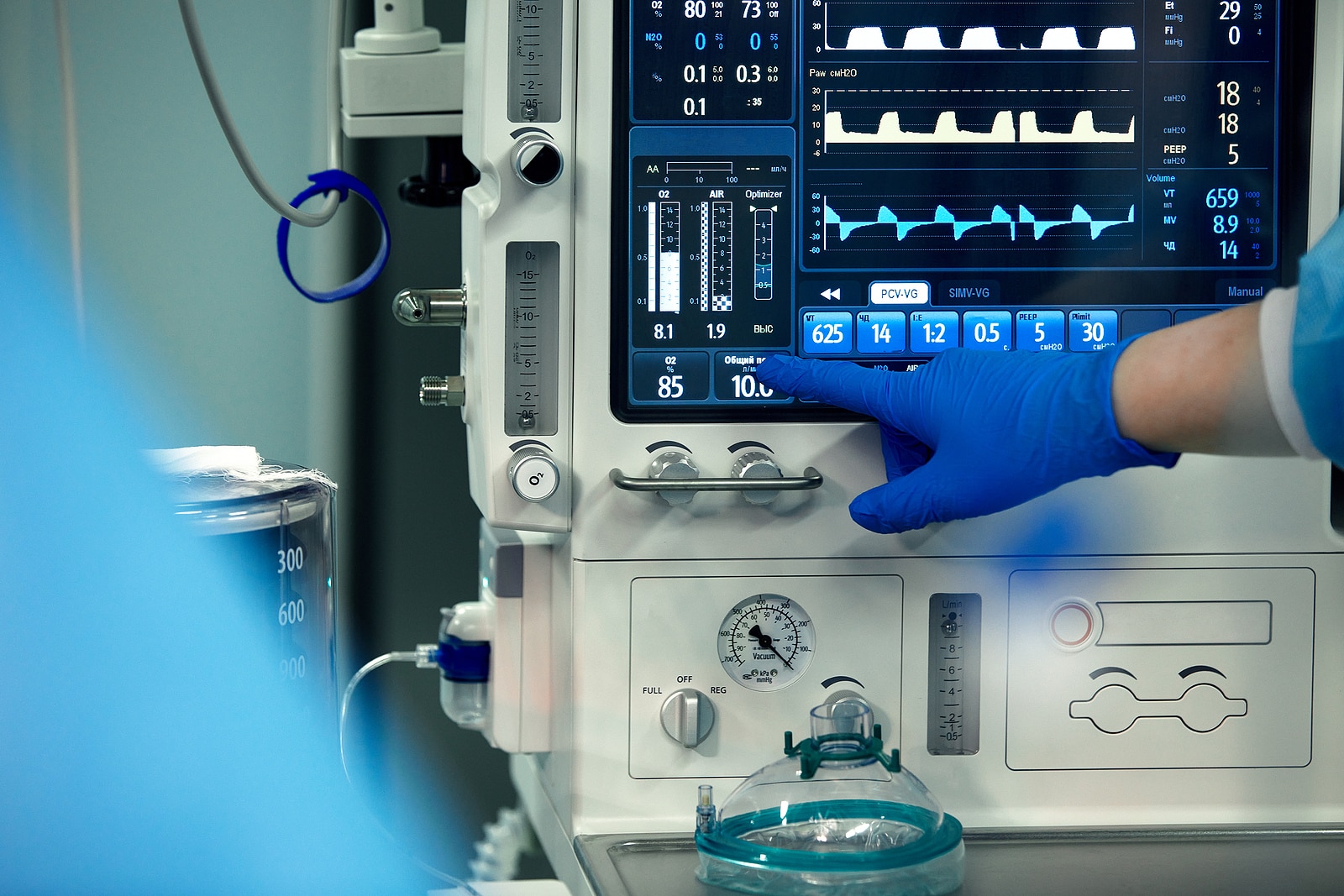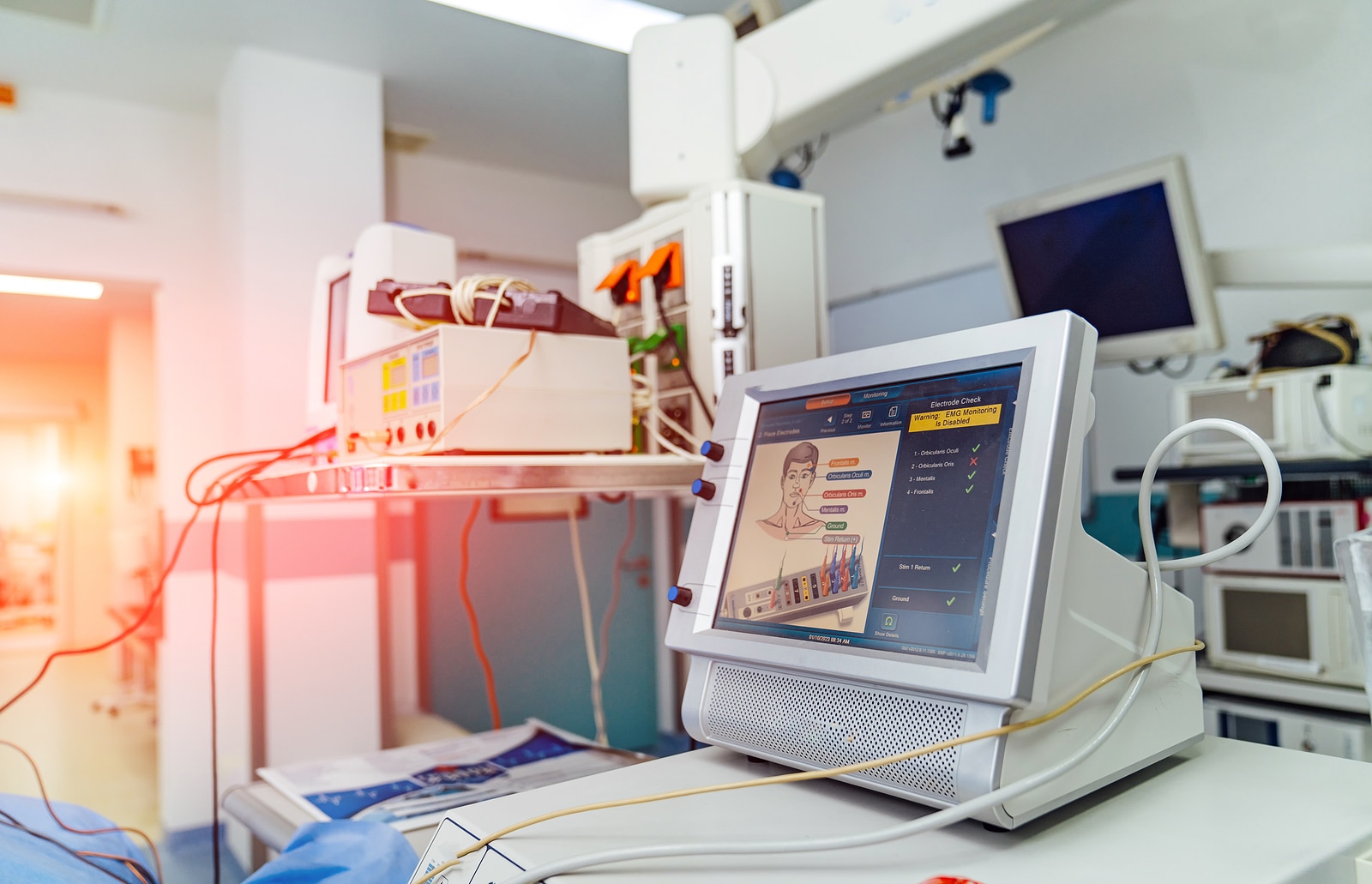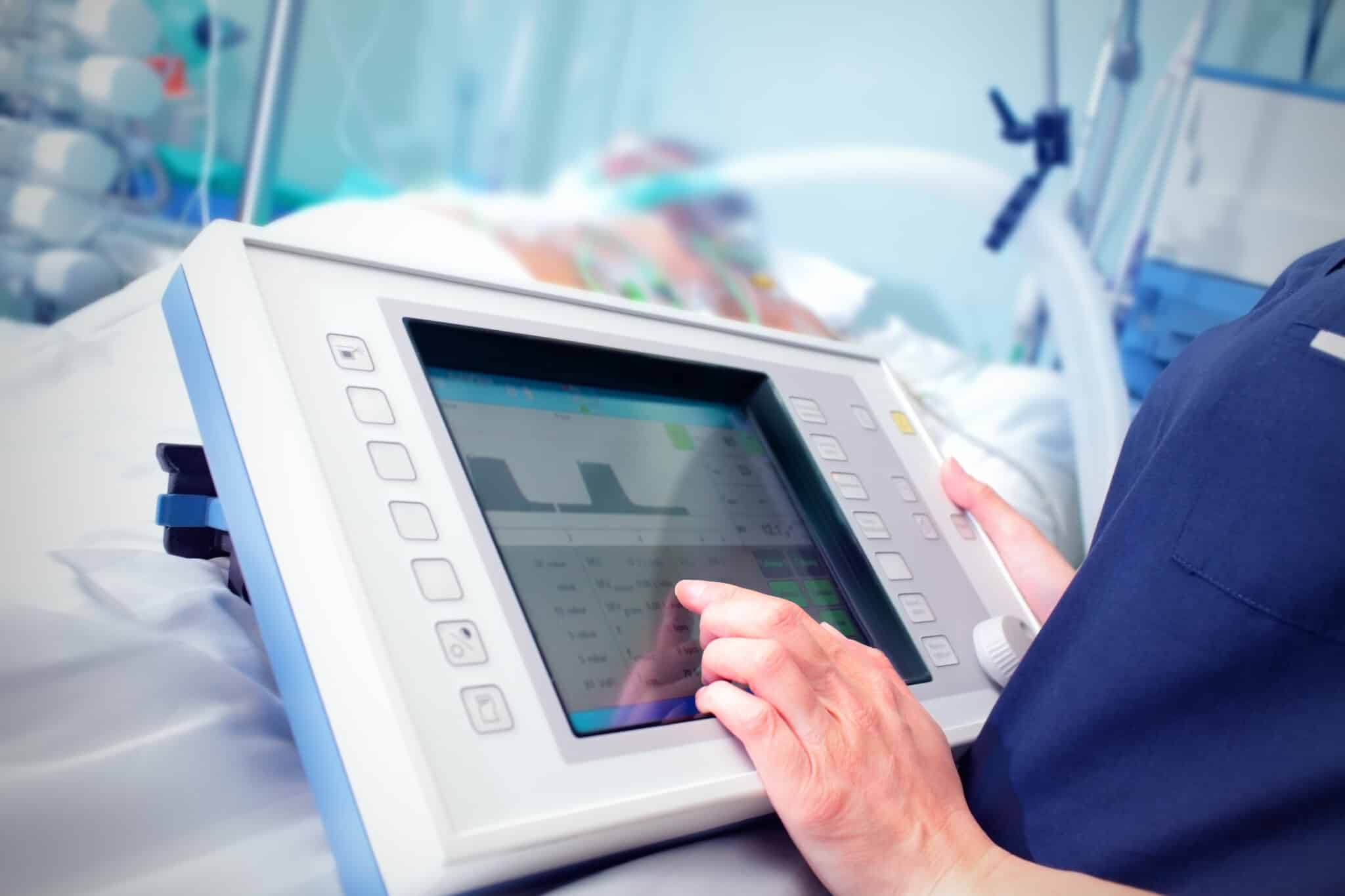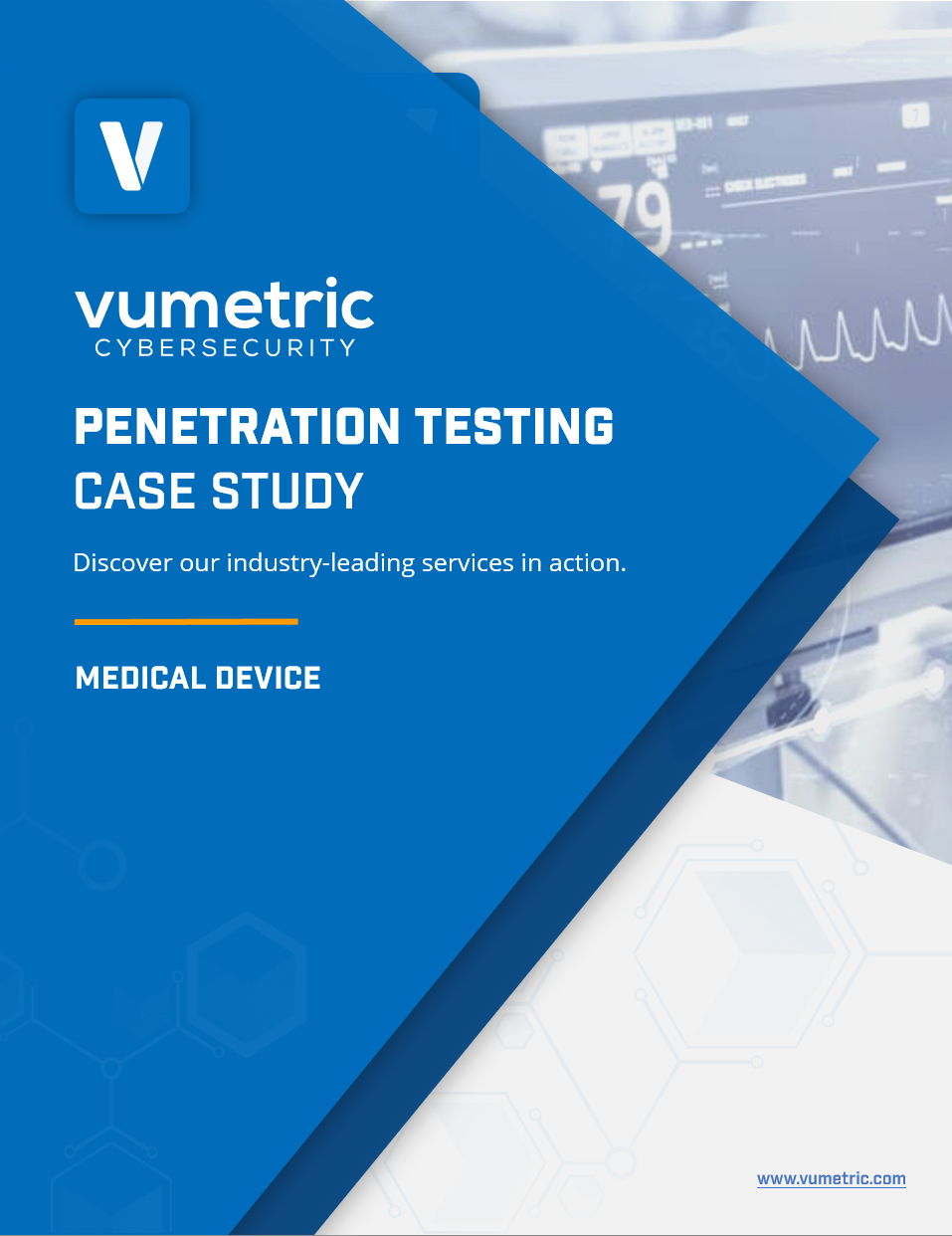Medical Device Penetration Testing
A Medical Device Penetration Test assesses the security of healthcare equipment and medical devices against potential vulnerabilities, ensuring compliance with FDA cybersecurity requirements.
What you'll get:
- Executive Summary: Outlining risk management implications
- Technical Report: Detailling vulnerabilities in your medical device
- Recommendations: Walkthrough on how to fix identified vulnerabilities
- Expert Guidance: Actions plan to improve your medical device security
- Attestation: To meet FDA pre-market cybersecurity requirements
SERVICES OVERVIEW
What is Medical Device Penetration Testing?
Medical Device Penetration Testing is a specialized service designed to identify and remediate vulnerabilities within medical devices and healthcare systems. In the healthcare sector, where patient data and safety are paramount, ensuring the security of medical devices against potential cyber-attacks is critical. Our tests simulate sophisticated attack scenarios and identify vulnerabilities that could be exploited by malicious actors, protecting sensitive patient information, and ensuring the uninterrupted operation of critical healthcare devices.
Our cybersecurity experts follow a systematic approach that comply with regulatory standards such as HIPAA and FDA guidelines by providing a thorough assessment of your medical device security posture. We not only identify vulnerabilities, but also provide actionable insights and recommendations to mitigate risk, ensure devices are robustly protected against potential cyber threats, and facilitate compliance with industry-specific cybersecurity standards.
trusted by top medical deviceS manufacturers




Why Should you Perform a Medical Device Penetration Test ?
- Patient safety and data security
Ensuring the integrity and confidentiality of sensitive patient data and safeguarding against disruptions to medical services. - Regulatory compliance
Adhering to stringent regulatory requirements, such as HIPAA, FDA-2018-D-3443 ISO/IEC 62304, ISO/IEC 81001-5-1 and others, to ensure compliance and prevent potential fines. - Complex device ecosystem
Managing and securing a diverse and complex ecosystem of interconnected medical devices and systems. - Evolving cyber threat landscape
Adapting to and mitigating the risks posed by the continuously evolving cyber threat landscape targeting healthcare.

How Will Medical Device Pentesting Help Secure my Healthcare Equipment?
- Uncover device-specific vulnerabilities
Identify and address unique vulnerabilities inherent to medical devices and their unique design, ensuring robust defenses against potential exploitation and unauthorized access. - Simulate real-world attacks against your device
Replicate advanced exploits targeting medical devices to gauge their resilience against current and emerging cyber threats, ensuring readiness against sophisticated adversaries. - Benchmark with healthcare and cybersecurity standards
Evaluate your medical device security posture against recognized healthcare cybersecurity frameworks, such as the FDA’s guidance and top security standards (MITRE, OSSTMM, OWASP, etc.). - Implement effective security measures
Gain detailed insights into the required security measures to safeguarding your medical device against modern cyber threats and vulnerabilities.
What Will be Assessed During a Medical Device Test?
- Device Communication
Communication protocols, data transmission security, and interface vulnerabilities, etc. - Authentication Mechanisms
User access controls, password policies, and multi-factor authentication, etc. - PHI Data Storage and Processing
Data encryption, storage security, and data processing integrity, etc. - Software and Firmware
Device software, firmware updates, and patch management, etc. - Network Security
Network configurations, firewall settings, communication protocols, and data transmission, etc. - And More
Legacy system integration, third-party components, backup and recovery systems, etc.

What are the Benefits of Conducting a Medical Device Penetration Test?
Conducting penetration testing is an essential step of developing and maintaining your medical device.
Enhanced Patient Safety
Ensure the safety and reliability of devices used in patient care by preventing tampering of critical functions.
FDA Cybersecurity Compliance
Achieve and maintain adherence to regulatory standards and avoid potential penalties (FDA, HIPAA, etc.)
Strategic Security Investment
Prioritize and strategically allocate resources towards your most critical risks and vulnerabilities.
Improved PHI Data Security
Secure sensitive patient data and intellectual property against unauthorized access and data breaches.
Minimized Interruptions of Service
Protect against potential disruptions or interruptions to critical healthcare services.
Increased Risk Visibility
Gain a deep understanding of your risks and inform stakeholders / third-parties on the state of your device's security.
MEDICAL DEVICE CYBERECURITY COMPLIANCE
The FDA’s Role in Safeguarding Medical Devices Cybersecurity
The U.S. Food and Drug Administration regulates medical devices and works aggressively to reduce cybersecurity risks in what is a rapidly changing environment. The following medical device cybersecurity awareness video is provided by FDA’s medical device cybersecurity team:
Ready for a Quote for your Medical Device Pentest Project?
Get a detailed quote by answering a few questions about your project!
The FDA's Premarket Guidance for
Medical Device Cybersecurity
FDA’s Premarket Guidance provides recommendations for medical device manufacturers to address cybersecurity risks during the design and development of their products.
- Perform a risk assessment to identify potential cybersecurity issues.
- Develop a risk management plan to mitigate identified risks.
- Provide documentation to support the measures implemented.
- Conduct regular penetration testing to discover and address security vulnerabilities prior to market launch.

The FDA's Postmarket Guidance for
Medical Device Cybersecurity
FDA’s Postmarket Guidance provides recommendations for manufacturers to addess postmarket cybersecurity vulnerabilities for marketed and distributed medical devices
- Implement a robust cybersecurity risk management program.
- Monitor and detect cybersecurity vulnerabilities.
- Assess the risk of identified vulnerabilities & implement appropriate actions.
- Communicate and collaborate with stakeholders for coordinated vulnerability disclosure.
Medical Device Penetration Testing FAQ
Couldn’t find the information you were looking for? Ask an expert directly.
Our medical device penetration testing has helped several medical device providers of all types meet requirements each year by identifying vulnerabilities that require remediation.Once the remediation testing is complete, we provide official certification that the vulnerabilities have been remediated, helping organizations easily meet any type of compliance requirement.
According to FDA guidance, equipment is considered a cyber device if it contains or is fundamentally based on software.The need for cybersecurity documentation arises when the device meets the definition of a cyber device. It's important to note that cybersecurity considerations remain paramount regardless of the source of the software component, whether from the device manufacturer or an outside entity.
We use recognized industry standards in our assessments, including PTES (Penetration Testing Execution Standard), UL 2900 (Standard for Software Cybersecurity for Network-Connectable Products), and U.S. Food and Drug Administration (FDA) guidelines, among others.These standards ensure a comprehensive and rigorous testing process tailored to the unique challenges of medical devices.
As experts in cybersecurity and data protection, we perform security testing under accreditation to IEC TR 60601-4-5 and ISO/IEC 17025 .Our teams of cybersecurity specialists also ensure that they stay abreast of the latest cybersecurity breaches and hacking techniques, helping you to future-proof your equipment.
- Vulnerability Assessment: This process detects recognized flaws within computers, networks, or software. After pinpointing these flaws, the organization can then undertake measures to address them.
- Code Evaluation (Static/Dynamic): This analysis uncovers both potential risks and security lapses. While static evaluation scrutinizes the source code in light of standard coding practices, dynamic evaluation inspects an active program to spot possible vulnerabilities when exposed to familiar or harmful inputs.
- Medical Device Security Testing: This procedure mimics an actual cyber-attack on a medical apparatus to spot weaknesses. This allows the maker to enhance the cyber fortitude of the device.
- Fuzzing: This technique reveals defects in software handling and integrity by introducing distorted data.
Why Choose Vumetric for
Medical Device Penetration Testing?
Vumetric is an ISO9001-certified boutique provider entirely dedicated to cybersecurity testing. Our methodologies are proven and our understanding of cybersecurity risks is extensive, allowing us to provide clear advice to our clients that is pragmatic, adapted to their needs and efficient in securing against the latest security threats.
Proven
Methodologies
Our testing methodologies are based on industry best practices and standards.
ExperiencedTeam
Our team of certified experts conducts more than 400 pentest projects annually.
ActionableResults
We provide quality reports with actionable recommendations to fix identified vulnerabilities.
Read Our Clients' Success Stories
Discover how our pentest services helps countless organizations every year improve their cybersecurity and prevent cyberattacks:
“ They were professional, knowledgeable, and transparent throughout. Their presentation of findings was engaging and effective. Their report and recommendations were easy to understand. ”
Louis E., Director of IT & CISO
“ They offered multiple alternative solutions to suit our budget, allowing us to prioritize how we spent our money. They were able to identify more risks than we could think of, and proposed straightforward solutions for them. ”
William K., Compliance Manager
Download Our Medical Device Penetration Testing Case Study!
See our external penetration testing services in action and discover how they can help secure your public-facing network perimeter from modern cyber threats and exploits.

Featured Cybersecurity Resources
Gain insight on emerging hacking trends, recommended best practices and tips to improve your cybersecurity posture:
Certified Penetration Testing Team
Our experts hold the most widely recognized penetration testing certifications. Partner with the best in the industry to protect your medical devices against cyber threats.

















